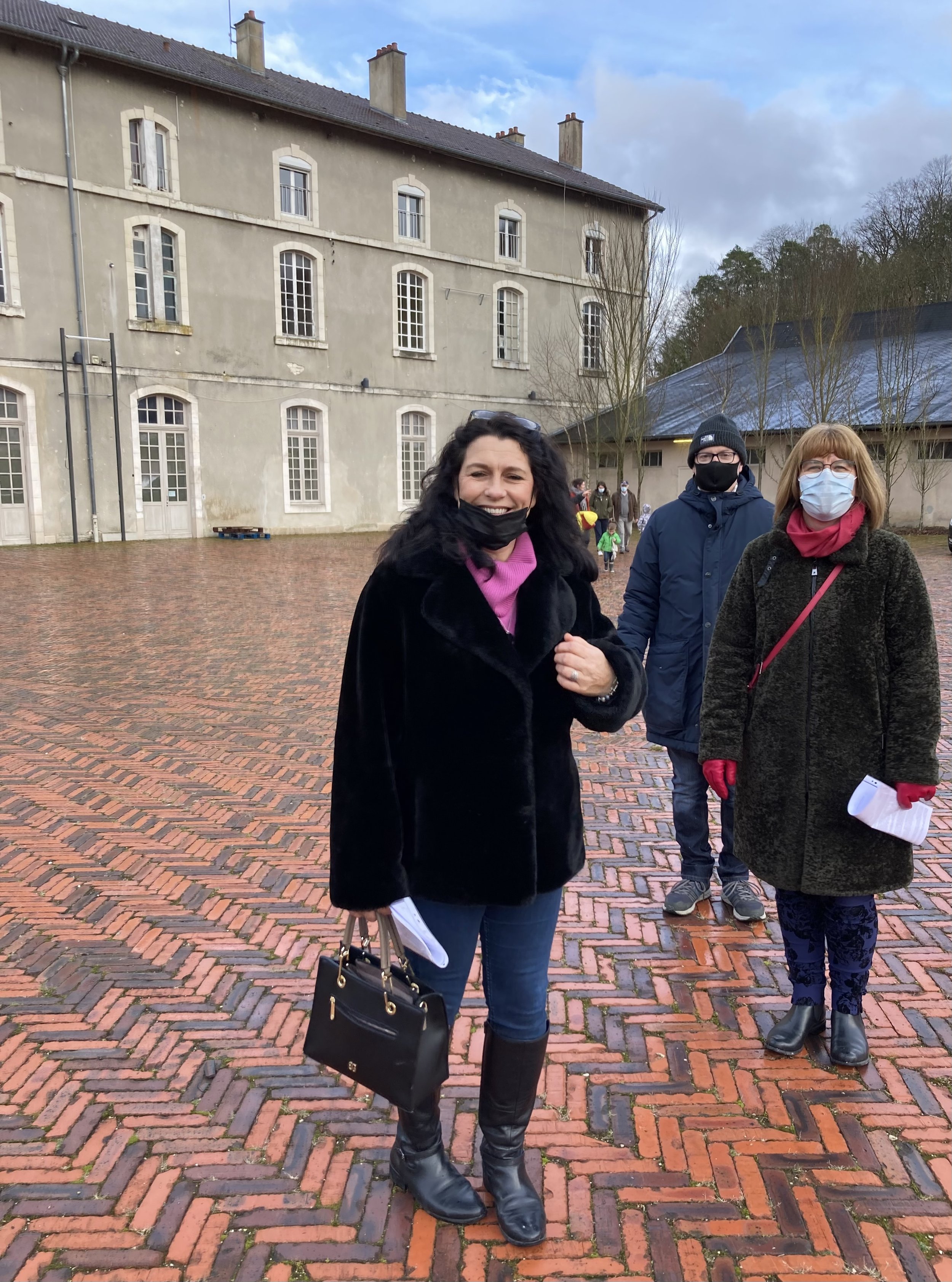Clairvaux revisited
On Sunday we went back to Clairvaux, the Cistercian abbey and prison. Earlier in the year we had visited it for a market of products sourced from monasteries all over France. This time we were going back to make the tour of the Abbey and the prison. To be clear, it’s not the part of the prison that is still in use, but the part that was closed down some 50 years ago. The actual prison is due to be closed next year, and the prisoners will be rehoused in other maximum security establishments. Only then will they decide on what to do with the buildings.
It was a bit of a wet and cold day, which somehow made the experience even more sinister. I’d told the others that the tour was mainly inside, but what I hadn’t realised was that being inside the stark, stone buildings would be just as cold as being outside…if not colder! It made you think about just how much of an awful place it would have been through the winter.
On arrival you have to deposit your ID – passports for overseas visitors – at reception. These are handed back at the end of the visit. We are told that there is absolutely no photography allowed whilst on the tour, so apologies I cannot share any pictures whilst we were inside. What I can share is that it is a really worthwhile visit. It starts with about 30 minutes of scene setting. This was all in french, but we had been given an English fact sheet to help us understand the history. Clairvaux was a place of silence, built 900 years ago by Saint Bernard who wanted to build the biggest abbey in the Cistercian world. It continued to be developed as a religious site until 1808, when it was bought by Napoleon to convert into France’s largest prison – during his reform of the prison system.
After the scene had been set, we were taken to the Convers building, which was where the Lay brothers (manual workers) lived. This had undergone a spectacular renovation by the Ministry of Culture. Its vaulted ceiling is stunning, and it is just amazing to consider the accuracy of the 13 vaults, which were built some 900 years ago. Strangely enough, the acoustics in this part of the building are perfect for music recitals, I will keep an eye out for some scheduled ones which I know they perform through the summer.
We were then taken to the Great Cloister, which dates from the 18th century. This was converted to the main building of Napoleon’s prison, and housed 1,500 condemned prisoners during the 19th century. During this time the medieval abbey church was dismantled by the contractor as they needed the stone elsewhere for the prison walls and buildings.
So that the prisoners still had a place of worship, the refectory in the great cloister became a chapel. We were also able to visit this, and it was such a surprise when the guide opened the door from the grim prison cells into this stunning refectory room, which looked like you were walking into a hall in a chateau. It had beautifully painted panelling, stucco trophies, and a crisp, white stone floor interspersed with black, square tiles. The prisoners would access it from one end, restricted to balconies overlooking the chapel.
The most chilling area of the tour, was that of the cells created in the Great Cloister, where up to 30 people at a time were locked up. The conditions were pretty grim, and you could easily understand why many prisoners died during imprisonment. A law was then passed that demanded that each prisoner should have a minimum of 4m². The answer to this at Clairvaux was to create ‘chicken coops’, made with wooden walls and ceilings, and with iron barred fronts, and stacked side by side in long rows. which we also got to see. They were still being used right up to 1971.
I have included the link to the official website here, which does show some photographs. I think over the years we will return to Clairvaux to see how it transforms, once the present day prisoners leave, and the ministry of culture hopefully decide to reclaim more of this beautiful and important historical story.

